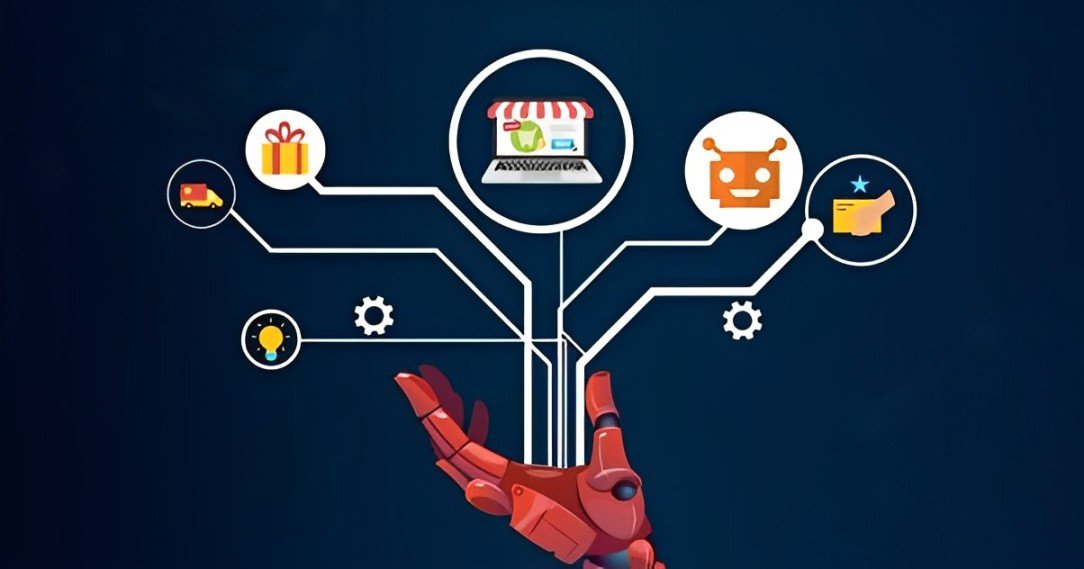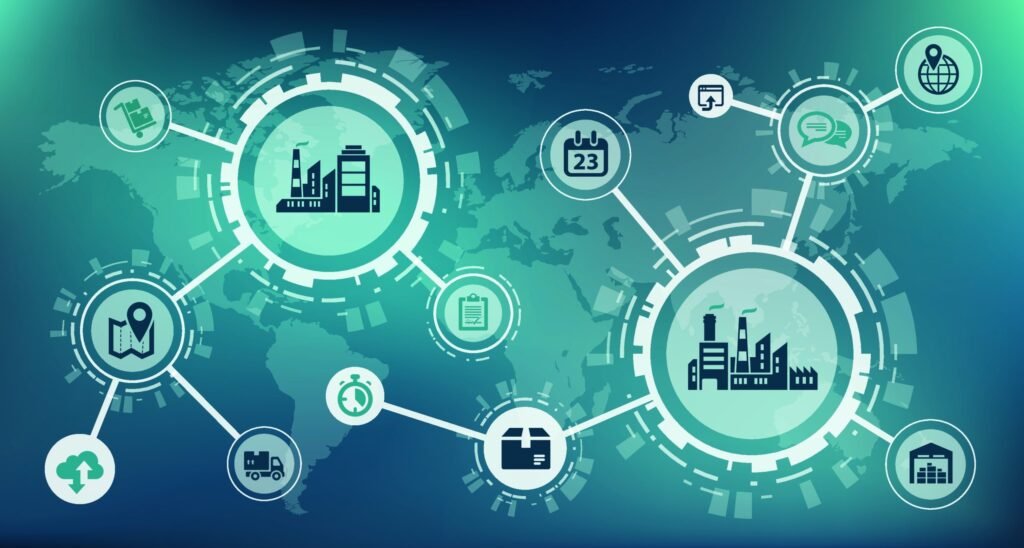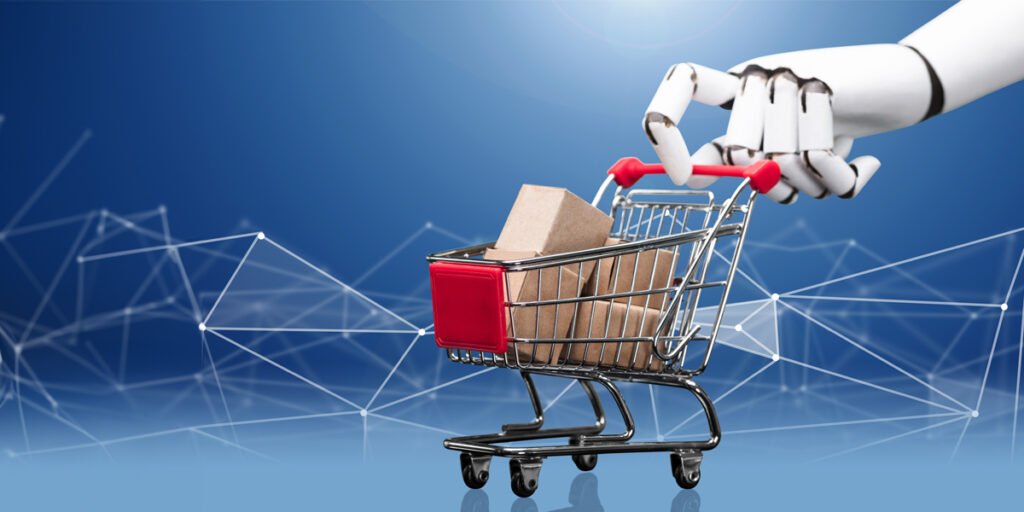
Think about the last time you shopped online. Chances are, you have recommendations for products you might like. That’s machine learning (ML) at work! Indeed, 84% of e-commerce companies are either prioritizing or actively using AI/ML solutions, according to a study by Statista.
E-commerce and machine learning have a symbiotic relationship. E-commerce generates vast amounts of data that can be used to train ML models. No wonder the potential of ML in e-commerce is huge. The machine learning market is expected to grow from US$21.14 billion in 2024 to US$134.20 billion by 2030, according to Statista’s report. This rapid growth shows that ML has a bright future in a variety of industries, including e-commerce.
Let’s discuss how ML is being used to improve the user experience on e-commerce websites. We will also explore the future of ML in e-commerce and provide insights and tips for businesses looking to leverage this technology.
Key Benefits of Machine Learning in E-commerce
Machine learning makes e-commerce smarter. According to a study by McKinsey, 56% of survey participants indicate the implementation of AI and ML in at least one business function. These machine-learning solutions offer numerous benefits. Including,
Personalized Shopping Experience for Customers
Machine learning is often appreciated for creating a personalized shopping experience. It excellently analyzes customer behavior, preferences, and past purchases. This analysis assists e-commerce platforms in recommending products that fit individual tastes. This excellent adoption of machine learning in e-commerce USA leads to better sales.
Predictive Analytics for Improved Sales Forecasting
Machine learning studies past sales data and customer trends. It helps businesses predict future demand. This accurate forecasting dodges overstocking. Moreover, it assists in planning marketing and promotion campaigns. With these, machine learning excellently enhances sales forecasting.
Dynamic Pricing Strategies
Machine learning enables dynamic pricing. It adjusts prices based on factors such as demand, competition, and customer behavior. Prices can change, offering discounts or increases to match market trends. It ensures competitive pricing and maximizes profits.
Efficient Inventory Management
Machine learning optimizes inventory management. It predicts which products will sell fast and which won’t. ML improves customer satisfaction and reduces costs. It reduces overstock and prevents stock shortages. Businesses can keep popular items in stock.
Role of Machine Learning in Customer Retention
Machine learning in e-commerce USA is essential for customer retention. It helps businesses understand customer needs. Moreover, it leads to higher satisfaction and loyalty. Below are the roles of machine learning in customer retention:
ML Algorithms for Personalized Recommendations
ML algorithms provide personalized recommendations. They analyze past purchases. They also look at browsing habits. It helps suggest products customers may like. Personalized experiences boost sales.
Predicting Customer Behavior and Trends
ML can predict customer behavior, analyze data to spot patterns, and allow businesses to forecast trends and adjust strategies. It allows them to meet customer needs before they change.
AI Chatbots Excellently Improving Customer Support
AI chatbots enhance customer support. They offer instant responses to common questions. Handle inquiries quickly and deliver fast resolutions to keep customers happy. It leads to increased loyalty.
Automated Email Marketing for Higher Retention Rates
Automated email marketing uses ML for personalization. Customers receive relevant updates and offers. This targeted approach increases engagement. It also improves retention rates.
Machine Learning in Fraud Detection and Prevention
Machine learning (ML) evolves the way businesses detect and prevent fraud. It analyzes large amounts of data quickly. It helps identify patterns that indicate fraud.

How ML Identifies Fraudulent Activities in Real-Time
Here are the ways by which machine learning in e-commerce USA identifies frauds:
| Function | Description |
| Real-Time Processing | ML algorithms analyze transactions as they occur. |
| Behavior Analysis | They look for unusual patterns or behaviors. indicate fraud. |
| Sudden Spikes | Algorithms monitor for sudden increases in transaction volume. |
| Alerts | If something seems off, the system alerts security teams. |
| Automatic Blocking | In certain situations, the system can automatically block the transaction |
Securing Payment Gateways and Transactions Using ML
Below are the ways by which ML secures payment gateways and tractions:
- Enhanced Security: Payment gateways implement ML to boost security.
- Continuous Learning: ML algorithms learn from new transaction data.
- Adaptability: These algorithms adapt over time to changing fraud patterns.
- Proactive Detection: They can identify and catch new types of fraud early.
- Customer Protection: This proactive approach helps protect customers from fraud.
Case Studies: E-commerce Fraud Prevention Success in the USA
Infosys BPM, based in the USA, improved fraud detection for a retail company by implementing an advanced omnichannel system. This led to annual savings of $2.5 million, a false positive rate of just 0.08%, and recoveries of $400,000 in point-of-sale fraud.
Enhancing User Experience with Machine Learning
In the fast-changing world of e-commerce, numerous businesses in the USA leverage machine learning to enhance customer experiences. Below are some of the following ways that showcase how Machine Learning in e-commerce USA significantly improves the user experience:
Intelligent Search
ML algorithms analyze user behavior to enhance product search. They understand preferences and deliver personalized results, making it easier for customers to find what they need quickly.
Virtual Assistants and Voice Search
Many e-commerce websites in the USA now use virtual assistants powered by machine learning. With these gadgets, shoppers may use voice commands to look for things. This excellent feature eliminates the need to use their hands. This convenience is appealing to an increasing number of people.
Website Navigation and Layouts
Machine Learning can also optimize website navigation. Analyzing user interactions helps businesses arrange layouts that are intuitive and user-friendly. Moreover, it results in smoother browsing and higher satisfaction.
How Machine Learning Drives Marketing and Advertising Strategies
Machine learning (ML) is changing how businesses market and advertise. It uses data-driven strategies to improve results. Here’s how ML impacts marketing:
Targeted Ads Using Machine Learning Algorithms
ML algorithms analyze user behavior. They look at browsing history and preferences. This helps businesses deliver personalized ads. Users see ads that match their interests. This increases engagement and drives conversions.
Optimizing Ad Spend with Predictive Analytics
Predictive analytics is another key feature of ML. It helps businesses forecast customer behavior. This allows for better ad targeting. Companies can identify which customers are likely to convert. ML helps allocate budgets effectively, reducing wasted spending on ineffective channels.
AI-Powered Content Personalization for Enhanced User Engagement
ML also drives content personalization. Algorithms tailor recommendations based on user preferences. This improves user engagement by showing relevant content. Whether it’s in emails or product suggestions, personalized content keeps users interested. It enhances the overall customer experience.

Machine Learning for Supply Chain Optimization
Machine learning in e-commerce USA is revolutionizing supply chains. It assists businesses with better decision-making. ML improves business efficiency and reduces operational costs. Here is the table to showcase the function with their description on supply chain optimization:
| Function | Description |
| Demand Forecasting | Predicting product demand to avoid overstocking and stockouts. |
| Optimizing Delivery Routes | Finding the most efficient routes to reduce shipping costs and improve delivery times. |
| Sustainable Supply Chains | Reducing waste and improving efficiency through optimized inventory management and carbon footprint tracking. |
Let’s take a closer look on each on them:
Demand Forecasting and Reducing Overstocking
Demand forecasting is one of the most crucial aspects of machine learning. It assists businesses in predicting the raw number of products customers can buy.
Accurate forecasts help companies avoid overstocking. Overstocking ties up money and increases storage costs. Machine learning algorithms analyze past sales data. They consider trends, seasons, and even economic conditions. This way, businesses can stock the right amount of products. It leads to less waste and more profit.
Optimizing Delivery Routes and Reducing Shipping Costs
Another crucial element of the supply chain is delivery. ML optimizes delivery routes to save time and money. Algorithms analyze traffic patterns, weather, and delivery schedules.
By finding the fastest routes, companies can cut shipping costs. Faster deliveries also enhance customer satisfaction. Happy customers return, boosting sales further.
How E-commerce Companies Use ML for Sustainable Supply Chains
E-commerce companies in the USA are adopting ML for sustainability. They focus on reducing waste and improving efficiency. For example, ML can optimize inventory levels. It ensures that products are available when needed without excess.
Moreover, it reduces waste and saves resources. Additionally, ML helps in tracking carbon footprints. Companies can measure their environmental impact and make improvements. Sustainable practices attract environmentally conscious customers.
Role of Machine Learning in Product Development
Machine learning (ML) is transforming product development. Ml provides valuable information to businesses. It allows businesses to determine what their customers want. Furthermore, it predicts the next big trend.
Predicting Future Trends and Customer Needs
Machine learning in e-commerce USA analyzes massive volumes of data to identify trends. Humans may often overlook these trends. This capability enables Businesses to offer products that customers want. Businesses can anticipate market changes and respond with new products by understanding the preferences of their consumers.
Reducing Time-to-Market with ML Insights
Traditional product development can be time-consuming and difficult. ML, on the other hand, accelerates the process by rapidly analyzing market data, consumer feedback, and sales trends. It enables faster decision-making and adjustments, allowing companies to launch products more efficiently.
Product Customization Based on Consumer Data
Today’s consumers expect personalized experiences. ML leverages consumer data to tailor products to individual preferences. For example, algorithms can analyze purchasing habits and suggest modifications that align with specific customer tastes. This approach enhances customer satisfaction and boosts brand loyalty.
Challenges of Executing Machine Learning in E-commerce
There are certain challenges and limitations of implementing machine learning in e-commerce USA. Have a quick look:
Data Privacy Concerns
- E-commerce companies collect vast amounts of data.
- Customer data includes personal information and purchasing habits.
- It is essential to ensure data protection to maintain trust.
- The violations can lead to legal penalties. Furthermore, it hampers business goodwill.
Cost and Infrastructure Requirements
- Implementing machine learning can be expensive.
- Companies need advanced hardware and software.
- Skilled professionals are required for effective implementation.
- Smaller businesses may struggle to meet these costs.
Algorithm Bias
- Machine learning models can reveal biases in data without intending to.
- This could imply that certain categories of clients are treated unfairly.
- Bias can influence advertisements and product recommendations.
- Balance is essential for creating an accessible browsing experience.
Integration Challenges
- Integrating ML into existing systems can be complex.
- Companies must ensure compatibility with legacy systems.
- Conduct ongoing maintenance and updates. These will lead to optimal performance.
Future of Machine Learning in E-commerce
In the future, machine learning will drive innovation in e-commerce. These technologies will become more advanced and accurate than today. Moreover, almost every business uses machine learning in e-commerce USA.

Emerging Technologies: AI, Blockchain, and Their Impact on E-commerce
AI automation will boost the efficiency of marketing. Furthermore, it will also automate customer service and dynamic pricing.
Next, blockchain will streamline supply networks and payment systems. It will make operations secure, transparent, and reliable.
These technologies will help e-commerce businesses run effectively, deliver a better user experience, and offer more personalized services.
The Role of 5G in Enhancing ML Applications in Retail
5G will enable faster and more real-time data processing. It will improve customer service and inventory management.
Moreover, it will also enhance shopping experiences. Using augmented reality (AR) and making AI-powered chatbots more responsive.
Predictions for the Next Decade of Machine Learning in E-commerce (USA)
Have a look at the predictions for the next decade:
- Hyper-personalization: ML will customize shopping experiences for each customer.
- Predictive analytics: Retailers will forecast trends and behavior.
- Automation: Routine tasks like customer service and order management will be automated.
- Voice and visual search: These will become standard, with better fraud detection systems.
Conclusion
In conclusion, machine learning in e-commerce USA is transforming the entire e-commerce landscape. It improves customer experiences with personalized recommendations. Businesses utilize data analysis to optimize inventory management and anticipate trends.
Furthermore, tools like chatbots enhance customer service. It provides instant responses. They help answer questions and solve problems quickly.
Machine learning also detects fraud, making online shopping safer. This technology increases efficiency and boosts sales.
As e-commerce evolves, machine learning will remain essential. Its impact is significant, transforming customer engagement and business operations.
FAQs:
Q. Is machine learning in demand in the USA?
A. Yes, machine learning is a pretty popular speciality in the United States because there is a growing need for professional who can provide businesses and industries with a competitive advantage while helping companies introduce various automations.
Q. How is machine learning used in e-commerce?
A. Those with e-commerce based business are embracing the power of machine learning by being able to make customized shopping solutions. Algorithms in the ML can calculate all the customer trends, and thus, in the future, guess all the products that may interest the customers, which can increase the rate of conversion.
Q. What is the salary after a Masters in machine learning in the USA?
A. The pay rates can be among the highest for persons with experience in Machine Learning engineering in the United States. For example, a Machine Learning engineer at Meta currently makes an average base salary of $145,245-$199,038, depending on the number of years of experience, 7-9 years.
Q. Is machine learning difficult?
A. Machine learning can prove to be difficult to study since the subject covers concepts from the field of mathematics, as well as computer. Algorithms and codes need to be finely tuned often down to the lowest level and it necessary to address problems from a multi-dimensional point of view.
Q. What is the hardest part of machine learning?
A. On of the biggest hurdles in machine learning is data. Choosing the proper algorithm or combination of algorithms and data set preprocessing for maximum accuracy are essential and time-taking steps which must be done accurately.







“This blog is a fantastic resource for anyone interested in AI and machine learning. The articles are detailed and offer actionable insights, which I rarely find elsewhere. They make complex topics approachable and engaging, which is perfect for both beginners and tech pros. Can’t wait to see more!”
“I’ve been following this tech blog for a while now, and it’s become my go-to source for everything related to AI, Android, and machine learning. The articles are well-researched and break down complex topics in a way that’s easy to understand. If you’re looking to stay updated on tech trends, this blog is a must-follow!”